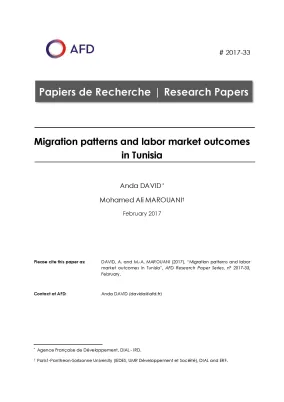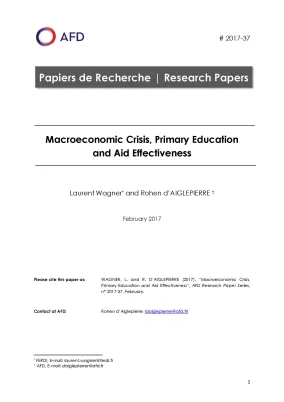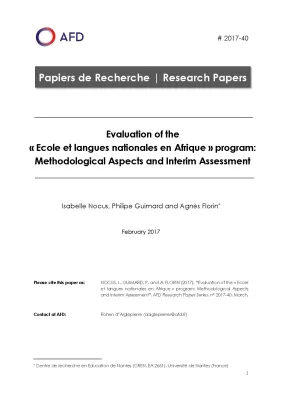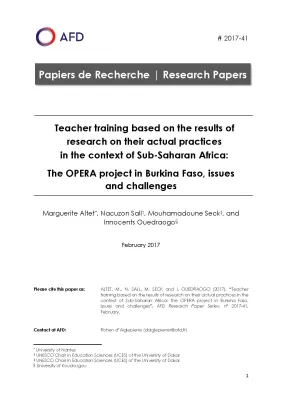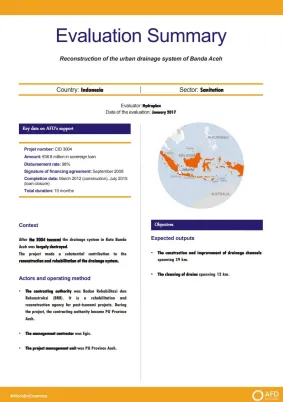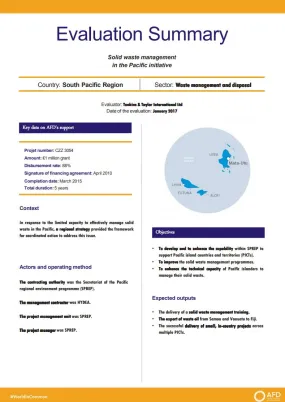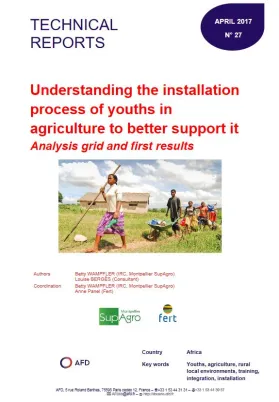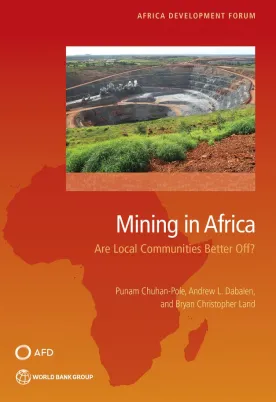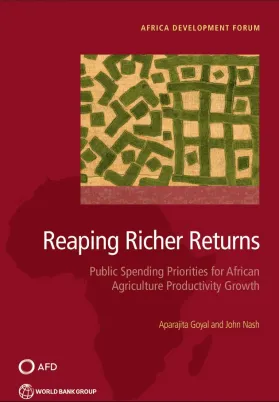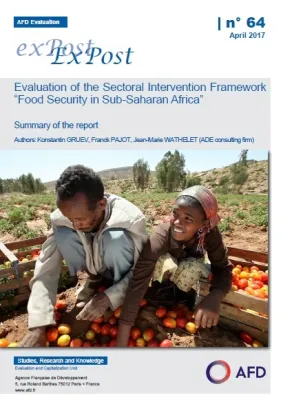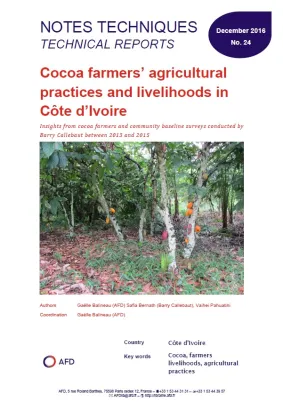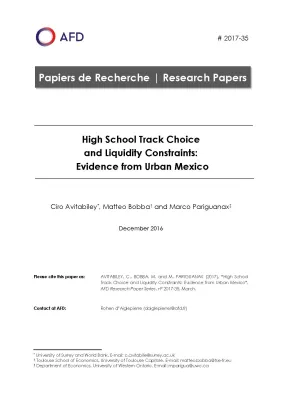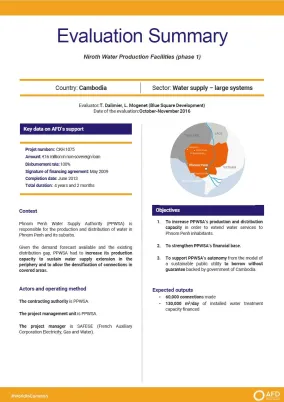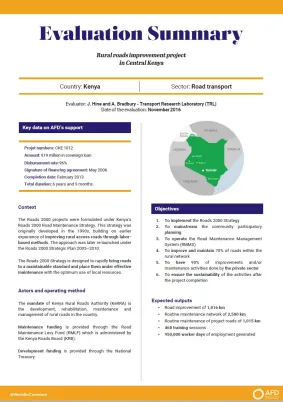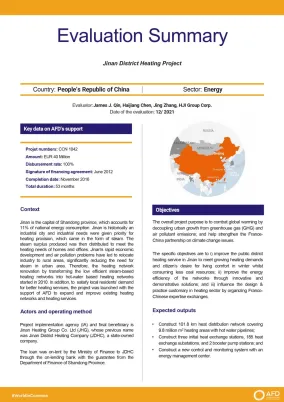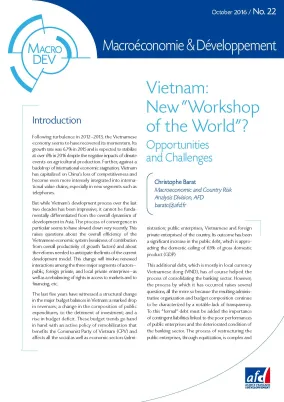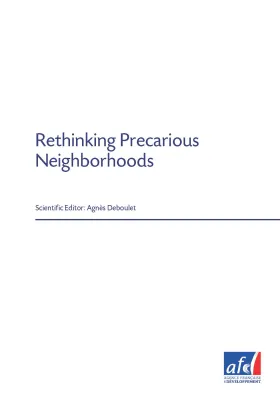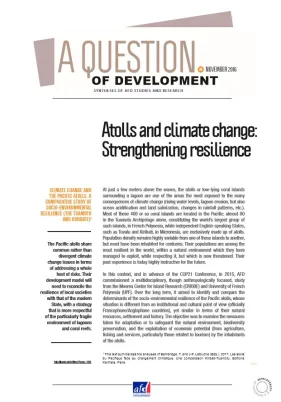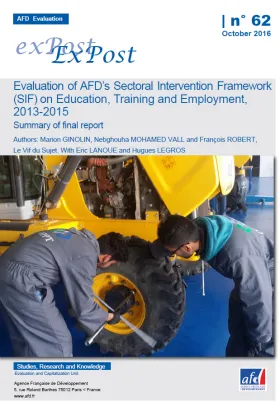Publications and media
Carbon Pricing and Global Warming: A Stock-flow Consistent Macro-dynamic Approach
To what extent can a worldwide carbon pricing foster the transition towards a low-carbon economy and help mitigate the effects of global warming? We address this question using a stock-flow consistent...
Published on
Migration patterns and labor market outcomes in Tunisia
This article focuses on the external effects of emigration on non-migrants and particularly on the interactions with labor market outcomes in Tunisia before and after the revolution. Using the new Tun...
Published on
Macroeconomic Crisis, Primary Education and Aid Effectiveness
While the relationship between macroeconomic crisis, human capital investment and international aid is intensively discussed by the international community, rigorous macroeconomic evidence is still mi...
Published on
Evaluation of the « Ecole et langues nationales en Afrique » program: Methodological Aspects and Interim Asses...
This eight-country evaluation seeks to measure how the ELAN Program methods of written language acquisition have an impact, during the first two years of primary school (Grade 1 and Grade 2), on oral...
Published on
Teacher training based on the results of research on their actual practices in the context of Sub-Saharan Afri...
The OPERA project (Observation des pratiques enseignantes dans leur rapport avec les apprentissages des élèves / Diagnosis of Teacher Practices in Relation with Learning) started on the basis of obser...
Published on
Evaluation Summary - Reconstruction of the urban drainage system of Banda Aceh
In Indonesia, for the “Sanitation” sector, the sovereign loan to support the reconstruction of the urban drainage system of Banda Aceh was subject to an evaluation in January 2017. After the 2004 t...
Published on
Evaluation Summary - Solid waste management in the Pacific initiative
In the South Pacific region, for the “Waste management and disposal” sector, Solid waste management in the Pacific initiative was subject to an evaluation in January 2017. The project was implement...
Published on
Understanding the installation process of youths in agriculture to better support it - Analysis grid and first...
Surprisingly, given the significant issues, it was not until the end of the 2000 decade that greater development efforts were significantly focusing on agricultural training and that the challenge of...
Published on
Mining in Africa : Are Local Communities Better Off?
This study focuses on the local and regional impact of large-scale gold mining in Africa in the context of a mineral boom in the region since 2000. It contributes to filling a gap in the literature on...
Published on
Reaping Richer Returns: Public Spending Priorities for African Agriculture Productivity Growth
Enhancing the productivity of agriculture is vital for Sub-Saharan Africa's economic future and is one of the most important tools to end extreme poverty and boost shared prosperity in the region. How...
Published on
Evaluation of the Sectoral Intervention Framework “Food Security in Sub-Saharan Africa”
In 2015, the Evaluation and Capitalisation Division (EVA) of Agence Française de Développement (AFD) initiated an evaluation of the Sectoral Intervention Framework for Food Security in Sub-Saharan Afr...
Published on
Cocoa farmers’ agricultural practices and livelihoods in Côte d’Ivoire
Cocoa production in Côte d‘Ivoire has more than doubled over the last four decades, from 565 thousand tons in 1984 to approximatively 1.5 million tons in recent years. This increase has been mainly du...
Published on
High School Track Choice and Liquidity Constraints: Evidence from Urban Mexico
We study how a large household windfall affects sorting of relatively disadvantaged youth over high school tracks by exploiting the discontinuity in the assignment of a welfare program in Mexico. The...
Published on
Evaluation Summary - Niroth Water Production Facilities (phase 1), Cambodia
In Cambodia, for the “Water supply” sector, the Niroth Water Production Facilities (phase 1) project was subject to an evaluation in October and November 2016. The project was implemented in the cont...
Published on
Evaluation Summary - Rural roads improvement project in Central Kenya
The Rural roads improvement project in Central Kenya was subject to an evaluation in November 2016, for the “Road transport” sector. The project was formulated under Kenya’s Roads 2000 Road Mainten...
Published on
The Commons : Interview with David Bollier
David Bollier is one of the Co-founder of the Commons Strategies Group. He gives his point of view about The Commons and examples of commoning.
Published on
Evaluation Summary - Cluster of 5 District Heating Projects in China
A cluster of 5 district heating projects financed by AFD in China was evaluated. They were approuved between 2012 and 2017, some of which were still being implemented at the time of the evaluation. Th...
Published on
Vietnam: New "Workshop of the World"? Opportunities and Challenges
Following turbulence in 2012-2013, the Vietnamese economy seems to have recovered its momentum. Its growth rate was 6.7% in 2015 and is expected to stabilize at over 6% in 2016 despite the negative im...
Published on
Rethinking Precarious Neighborhoods
On the occasion of the United Nations Habitat III Conference on cities, to take place in Quito (Ecuador) in October 2016, this research publication proposes an innovative reflection on precarious neig...
Published on
Atolls and climate change: Strengthening resilience
At just a few meters above the waves, the atolls or low-lying coral islands surrounding a lagoon are one of the areas the most exposed to the many consequences of climate change (rising water levels,...
Published on
Evaluation of AFD‘s Sectoral Intervention Framework (SIF) on Education, Training and Employment, 2013-2015
AFD‘s Sectoral Intervention Frameworks (SIF) are reference documents that plan and steer work in a given field over a period of three to five years, in addition to providing financial guidelines (amou...
Published on

